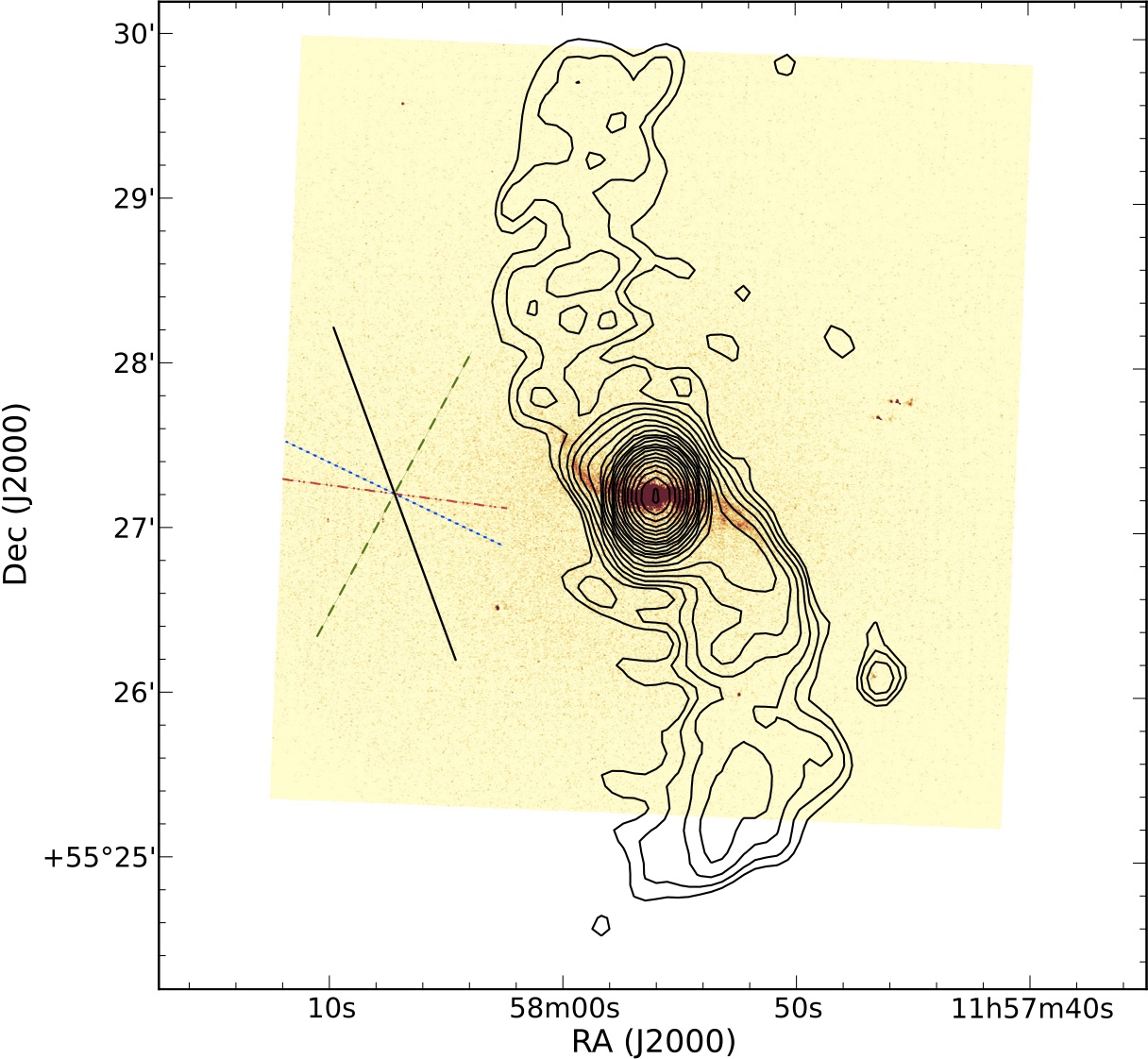Daily Image
02-08-2016A rare example of low surface-brightness radio lobes in a gas-rich early-type galaxy: the story of NGC 3998
| Submitter: | Raffaella Morganti & Tom Oosterloo |
| Description: | Every galaxy has a super massive black hole (a hundred million times as heavy as the Sun) in its centre. However, astronomers are left with the big puzzle of why some of these black holes are active (i.e. it emits enormous mounts of energy) while other are not and why the manifestation of the activity can take such a variety of forms. One of the likely reasons for this is the presence of gas near a super massive black hole. As part of the RadioLife project, we are trying to study the gas, and in particular neutral hydrogen, near super-massive black holes in a number of systems to understand under which conditions it turns the black hole from dormant to active. The nearby galaxy NGC 3998 was observed with the WSRT a few years ago as part of the study of a larger sample of galaxies (ATLAS3D, see Daily Images 22-11-2011 and 11-02-2011). It was found to have two faint, S-shaped radio lobes (see contours in the figure, superimposed to an image of the ionised gas). Such structures are seldom seen in galaxies of low radio luminosity like NGC 3998. The presence of a large HI disc in NGC 3998 suggested a possible link between the gas and the radio lobes, but it took us some time to come up with a good explanation to describe this system! The story of this intriguing galaxy is now in a paper accepted for publication by Astronomy & Astrophysics: "A rare example of low surface-brightness radio lobes in a gas-rich early-type galaxy: the story of NGC 3998" http://arxiv.org/abs/1605.03873 ) by Bradley S. Frank, Raffaella Morganti, Tom Oosterloo, Kristina Nyland, Paolo Serra. There, we suggest that the HI disc was accreted through a minor merger. The fact that the S-shape of the inner gas disk mirrors the S-shape of the outer radio lobes is not a coincidence. The torques causing the gas disk to warp into an S-shape in the inner regions are also responsible for gas falling into the AGN, leading to a precessing jet. We think that the extended radio jets are poorly collimated and turbulent, and will, therefore, quickly fade. This explains the rarity of radio lobes in galaxies similar to NGC 3998. The fuelling of the central super-massive black hole is likely occurring via "discrete events", as suggested by the observed variability of the radio core and the extremely high core dominance, which we attribute to the formation and ejection of a new jet resulting from a recent fuelling event. We are testing this idea using LOFAR observations where we have also detected the faint lobes. The spectral properties will tell us more about their age and their fate. |
| Copyright: | Astron |
| Tweet |  |
